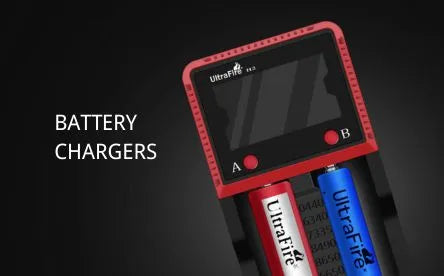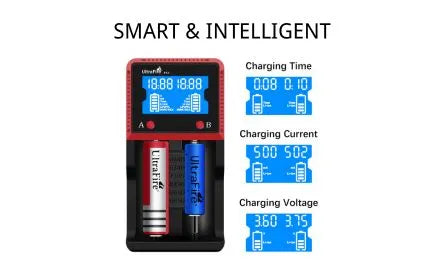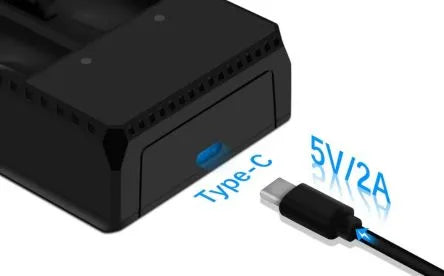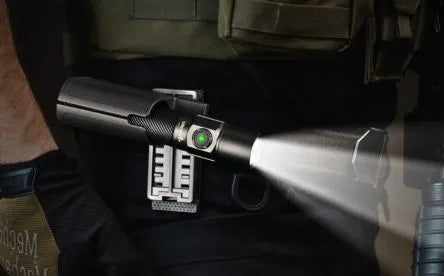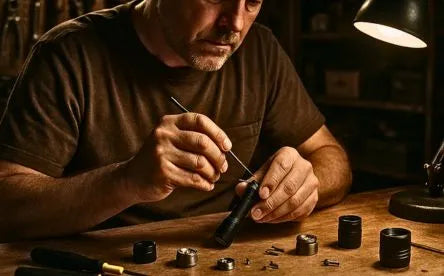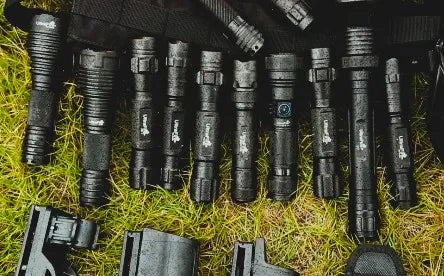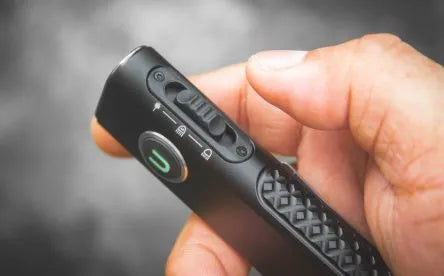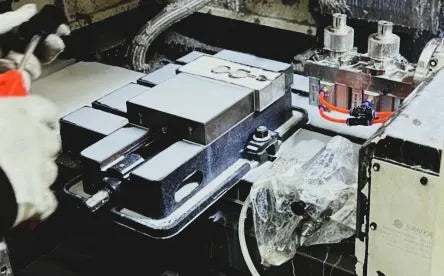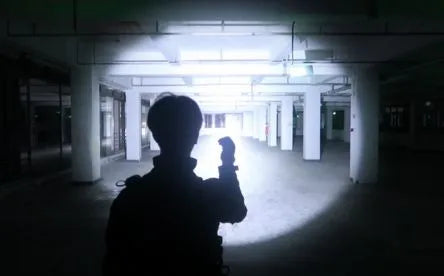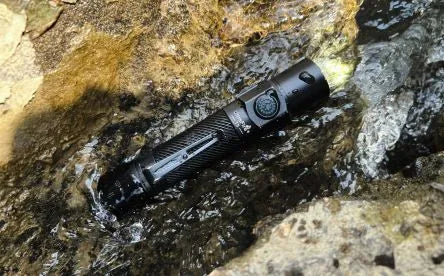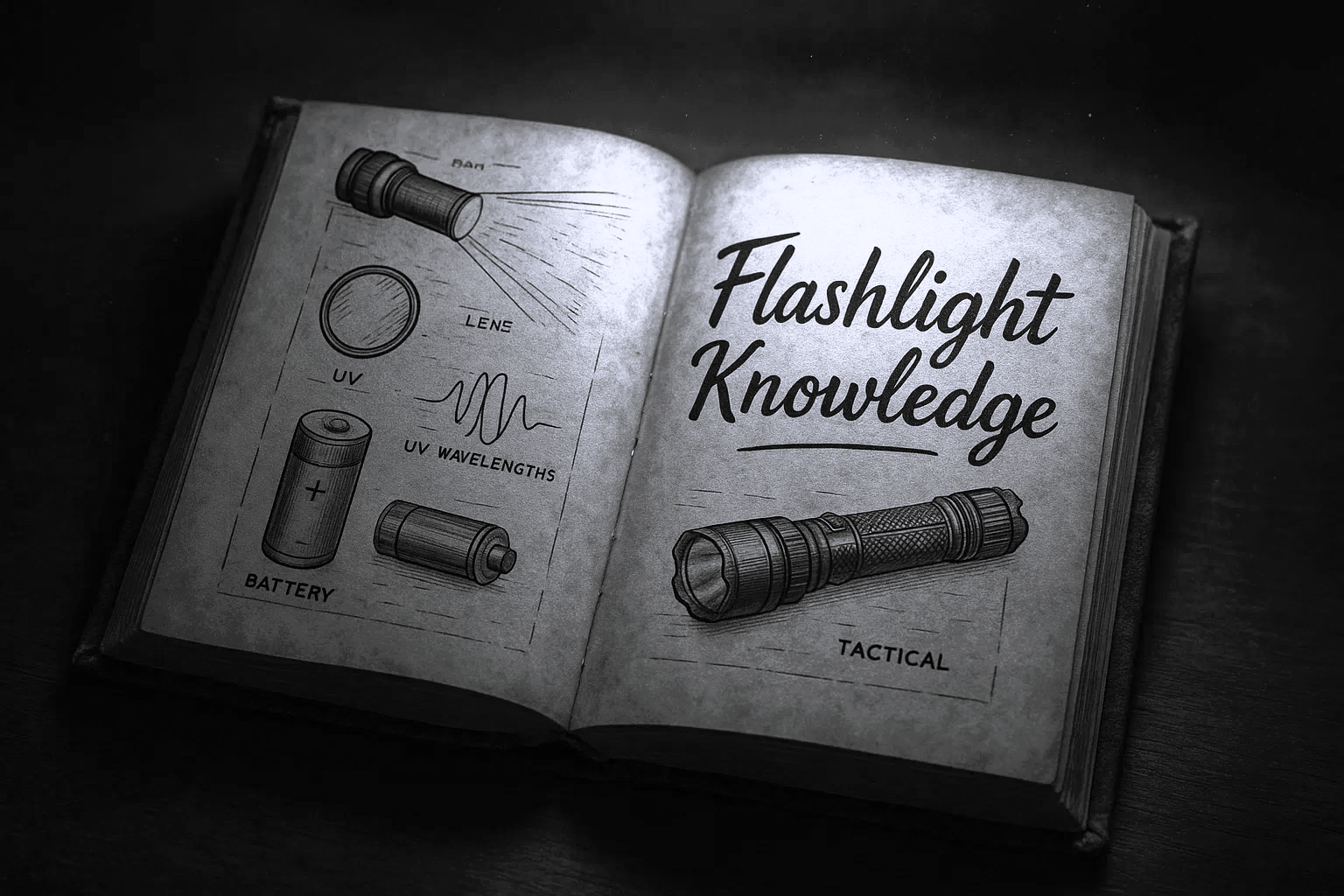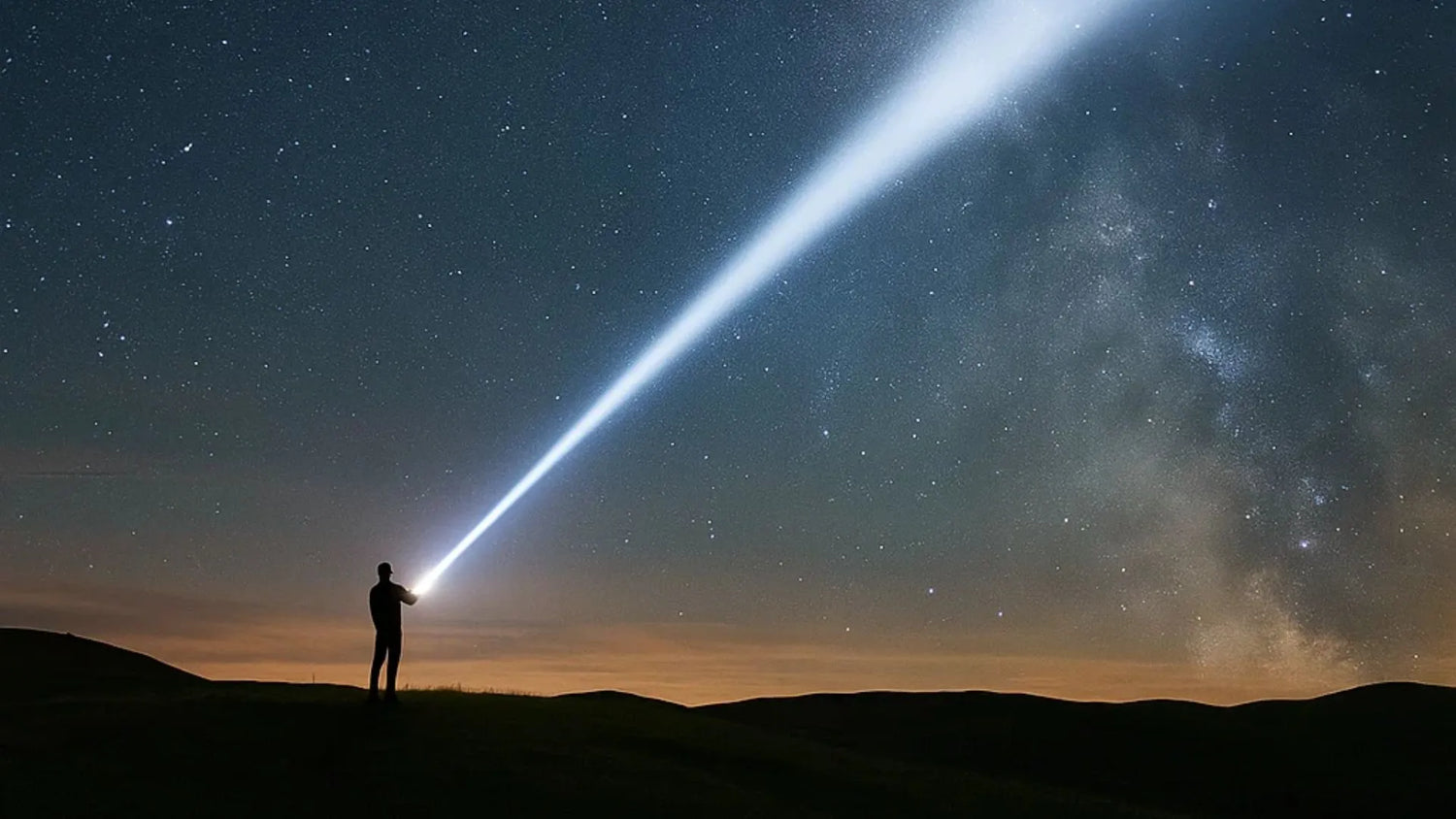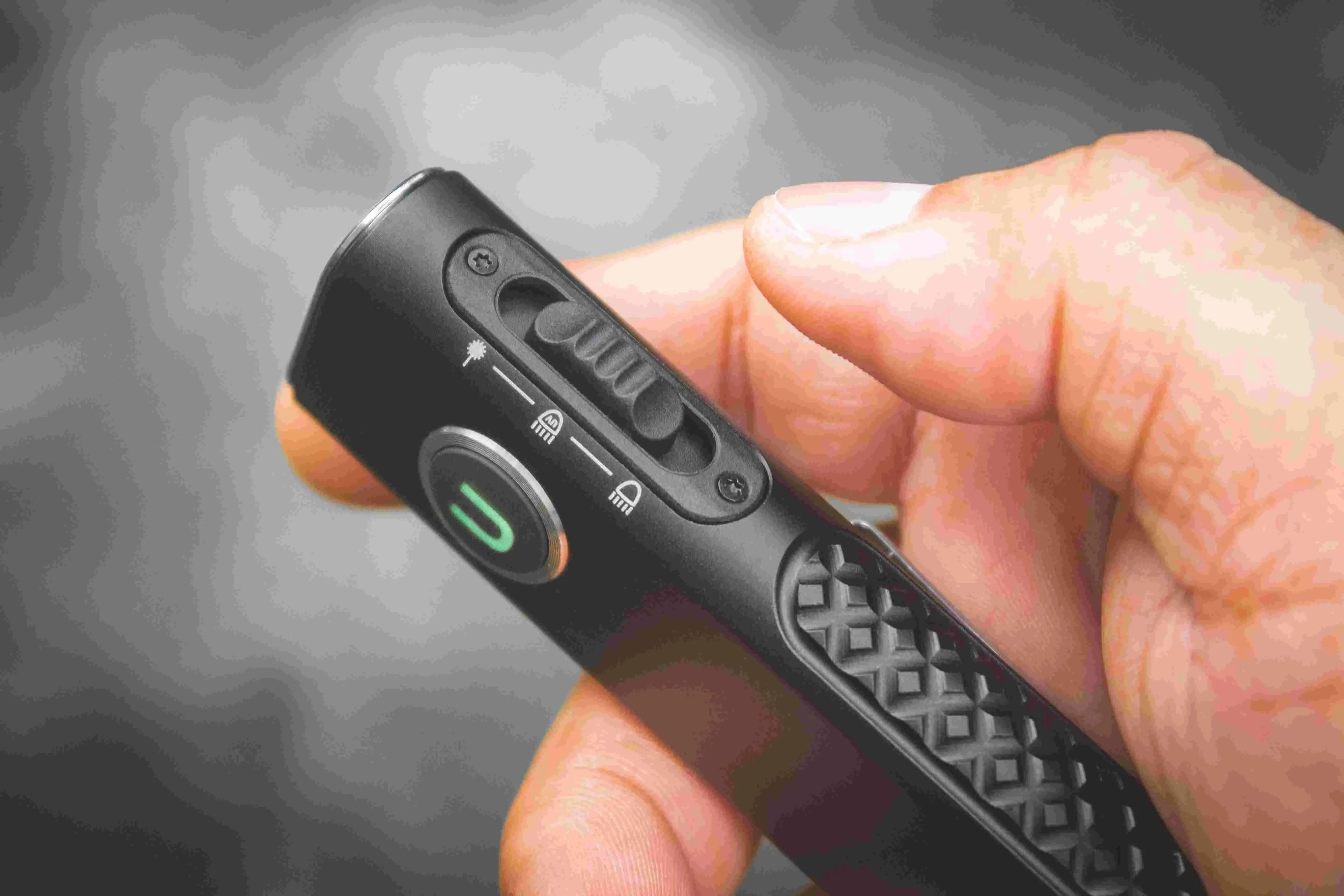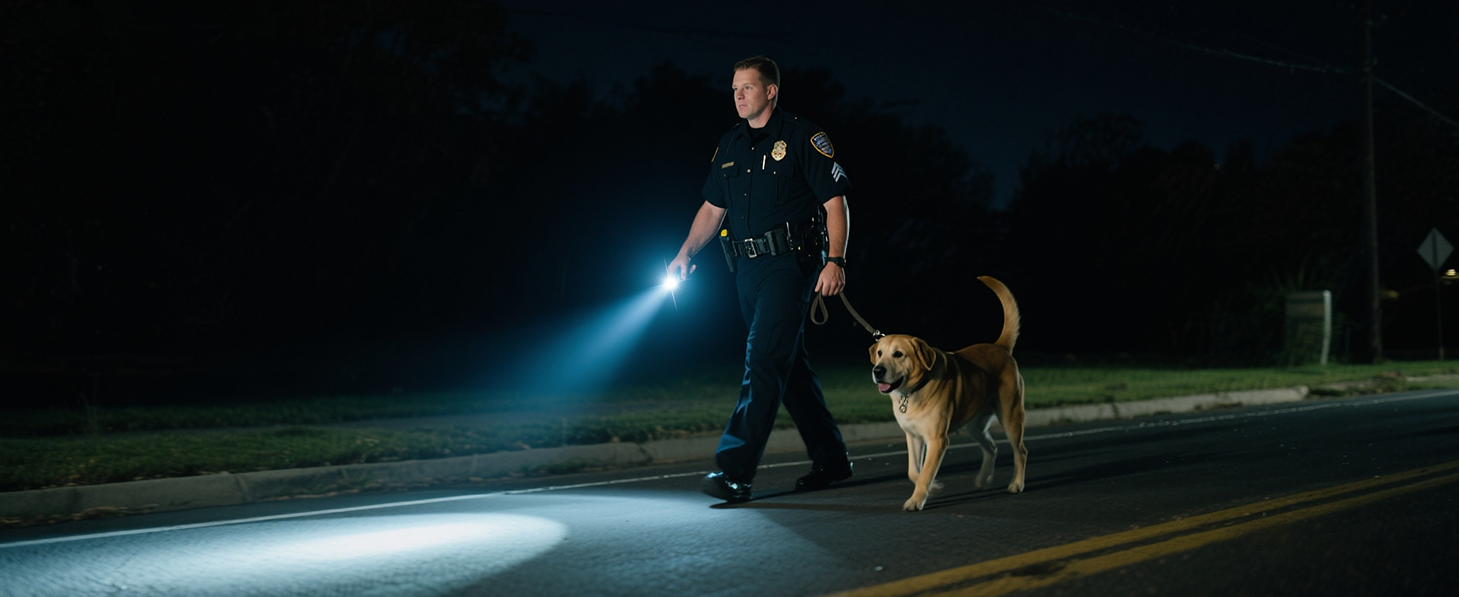What is LEP and how does it work?
LEP uses a laser diode to hit a phosphor surface. The phosphor converts the laser’s energy into broad-spectrum visible light, and precision optics collimate that light into a very tight, bright hotspot (high candela). Because the light is concentrated, LEP lights often achieve much greater throw (distance) than LED lights of the same lumen rating. In short: small lumen numbers, huge candela and throw.
Lumens vs. candela — the simple difference
-
Lumens measure total light output (how much light the flashlight produces in all directions).
-
Candela measures intensity in a given direction — the number that matters for “how far” you can see.
For long-range spotting, candela (and the derived beam distance) is the key stat — not lumens. Many LEP lights list modest lumens but massive candela.
Real numbers and examples (data & statistics)
-
Some LEP flashlights reach hundreds of thousands to millions of candela, producing beam distances measured in kilometers under ideal conditions. For example, one field test measured a candidate LEP with ~1,782,000 cd and a throw of ~2.67 km. Other high-end LEPs advertise candela in the multiple-million range and claimed distances up to ~4,000 m. These are specialty, long-throw results — not everyday illumination.
-
Typical tradeoffs you’ll see in spec sheets: lower lumens, very high candela, narrow beam angle, and laser safety class warnings. Expect runtime / battery numbers that depend heavily on the output mode and the battery used.
Field notes (hands-on impressions & what users report)
Note: below are summarized field observations drawn from hands-on reviews, community tests, and expert writeups rather than my personal physical testing.
What testers commonly say:
-
The beam feels “laser-like.” A tiny, bright hotspot throws far and remains visible at distances where LEDs look washed out. This is dramatic and satisfying for spotting.
-
Aiming matters. Because the hotspot is narrow, you must aim precisely. LEPs are less useful for close-in work where a wide flood is needed.
-
Temporarily blinding. On full output, the beam can be dazzling; avoid shining it at people or animals. Many reviewers stress laser-safety awareness.
-
Battery and thermal management. High-intensity throw modes drain batteries and can run hot; good LEP designs include thermal control or stepped output for extended use.
Comparative ranking — how to think about LEP vs LED
By purpose (top picks by category — conceptual, not a product spec list):
Best value / beginner-friendly approach: UltraFire — if you’re new to long-throw tools and want a brand focused on approachable pricing and practical features, UltraFire’s lineup and support model (contact UltraFire for current LEP offerings) is worth checking. (Check current models & specs before you buy.)
Why this structure? LEP is a use-case technology: if you need extreme reach, LEP often wins. If you need close-range flood or tactical strobes, LEDs are usually better. Avoid buying an LEP expecting it to replace an EDC flood light.
Buying checklist — what to check on the spec sheet
-
Candela and beam distance (not just lumens).
-
Laser safety class (know legal and safety implications in your country).
-
Battery type & capacity (21700s are common in throwers).
-
Runtime and heat/thermal controls.
-
Size/weight and how you’ll carry it (holster, pocket, clip).
-
Warranty and seller source — buy from reputable dealers or the brand’s official channels.
FAQs
Q: Are LEP flashlights dangerous to eyes?
A: They can be — the laser diode and the focused hotspot make eye exposure risky on high outputs. Use caution, don’t point at people, and follow any laser-safety class warnings on the product. Some LEPs are classified at levels that require special handling.
Q: Will LEP replace LED flashlights?
A: No. LEP complements LEDs. LEP = extreme long-throw spotlight. LED = versatile flood, better for close-in tasks and general purpose use. Choose based on primary use.
Q: How far can an LEP reach in real life?
A: Under ideal conditions, thousands of meters is possible for high-end models, but real-world visibility depends on weather, atmosphere, and target reflectivity. Manufacturer claims assume perfect conditions; independent measurements are the gold standard.
Q: Are LEP flashlights legal everywhere?
A: Laser safety and use laws vary by country and region. In many places, shining high-power beams at aircraft, vehicles, or people is illegal. Check local regulations before using a long-throw device near public areas.
Q: How do I test throw at home?
A: Use a lux meter at a known distance to calculate candela, or compare practical spotting distance in a safe open area at night. Many communities and reviewers publish measured throw figures — look for independent tests.
Short verdict and recommendations
-
Choose an LEP if your primary need is distance spotting — e.g., shoreline lookout, search and rescue scouting, long-range hunting (where legal), or surveying large outdoor areas at night.
-
Don’t buy an LEP if you need wide flood light for close work, general EDC, or indoor use.
-
Watch for candela numbers and independent measurements, and treat LEP use with laser-safety awareness.

